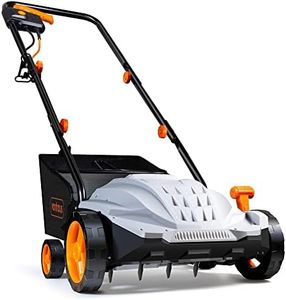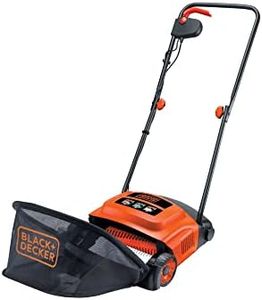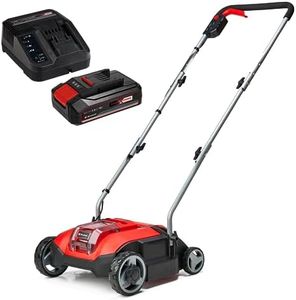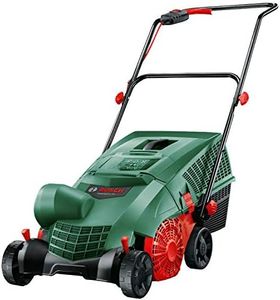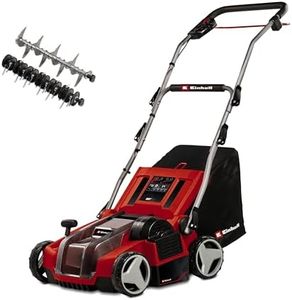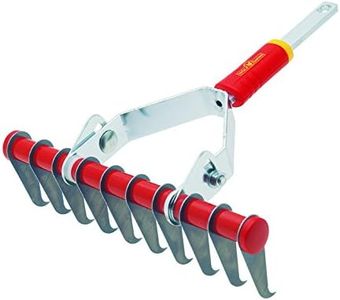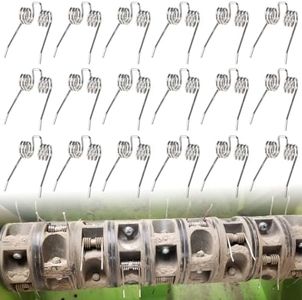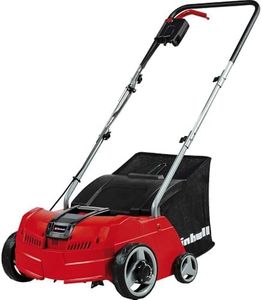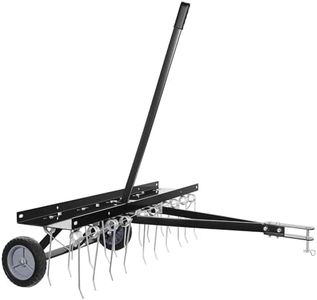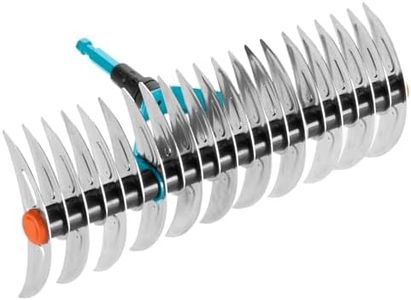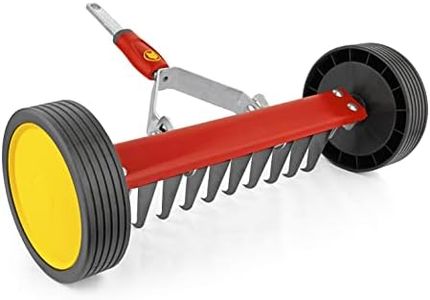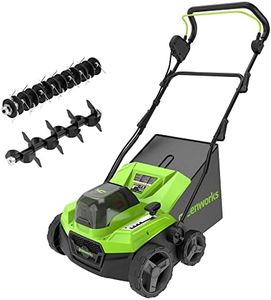We Use CookiesWe use cookies to enhance the security, performance,
functionality and for analytical and promotional activities. By continuing to browse this site you
are agreeing to our privacy policy
10 Best dethatchers
From leading brands and best sellers available on the web.Recommended lists
Buying Guide for the Best dethatchers
Choosing the right dethatcher can make a significant difference in maintaining a healthy and lush lawn. Dethatchers help remove the layer of dead grass, roots, and debris that can build up on your lawn over time, which can prevent water, nutrients, and air from reaching the soil. When selecting a dethatcher, it's important to consider several key specifications to ensure you pick the best fit for your lawn care needs.TypeDethatchers come in different types, including manual, electric, and gas-powered. Manual dethatchers are best for small lawns and require physical effort to operate. Electric dethatchers are suitable for medium-sized lawns and are easier to use, but they require access to a power source. Gas-powered dethatchers are ideal for large lawns and offer the most power and mobility, but they can be noisier and require more maintenance. Choose the type based on the size of your lawn and your preference for convenience and power.
Working WidthThe working width of a dethatcher refers to the width of the area it can cover in a single pass. A wider working width means you can cover more ground quickly, which is beneficial for larger lawns. Working widths typically range from about 12 inches to 20 inches or more. For small lawns, a narrower working width is sufficient, while larger lawns will benefit from a wider working width to save time and effort.
Tine MaterialTines are the parts of the dethatcher that penetrate the soil and remove thatch. They can be made from various materials, including steel and plastic. Steel tines are more durable and effective at removing tough thatch, making them suitable for larger or more neglected lawns. Plastic tines are lighter and less durable but can be sufficient for smaller, well-maintained lawns. Consider the condition of your lawn and the durability you need when choosing tine material.
Adjustable Depth SettingsAdjustable depth settings allow you to control how deep the tines penetrate the soil. This is important because different lawns and thatch levels require different depths for effective dethatching. Depth settings typically range from shallow to deep. For light dethatching, a shallow setting is sufficient, while more severe thatch buildup may require a deeper setting. Look for a dethatcher with multiple depth settings to give you flexibility in maintaining your lawn.
Collection BagSome dethatchers come with a collection bag that gathers the removed thatch, making cleanup easier. This feature is particularly useful for those who want to minimize the effort of raking and disposing of the thatch manually. If you prefer a cleaner and more convenient dethatching process, look for a model with a collection bag. However, if you don't mind doing some extra cleanup, this feature may not be as important.
WeightThe weight of the dethatcher can affect its ease of use and maneuverability. Lighter dethatchers are easier to push and handle, especially on uneven terrain or slopes. However, heavier dethatchers may provide more stability and better tine penetration. Consider your physical strength and the terrain of your lawn when choosing the weight of the dethatcher. If you have a large or hilly lawn, a heavier model might be more effective, while a lighter model is better for smaller, flat lawns.
